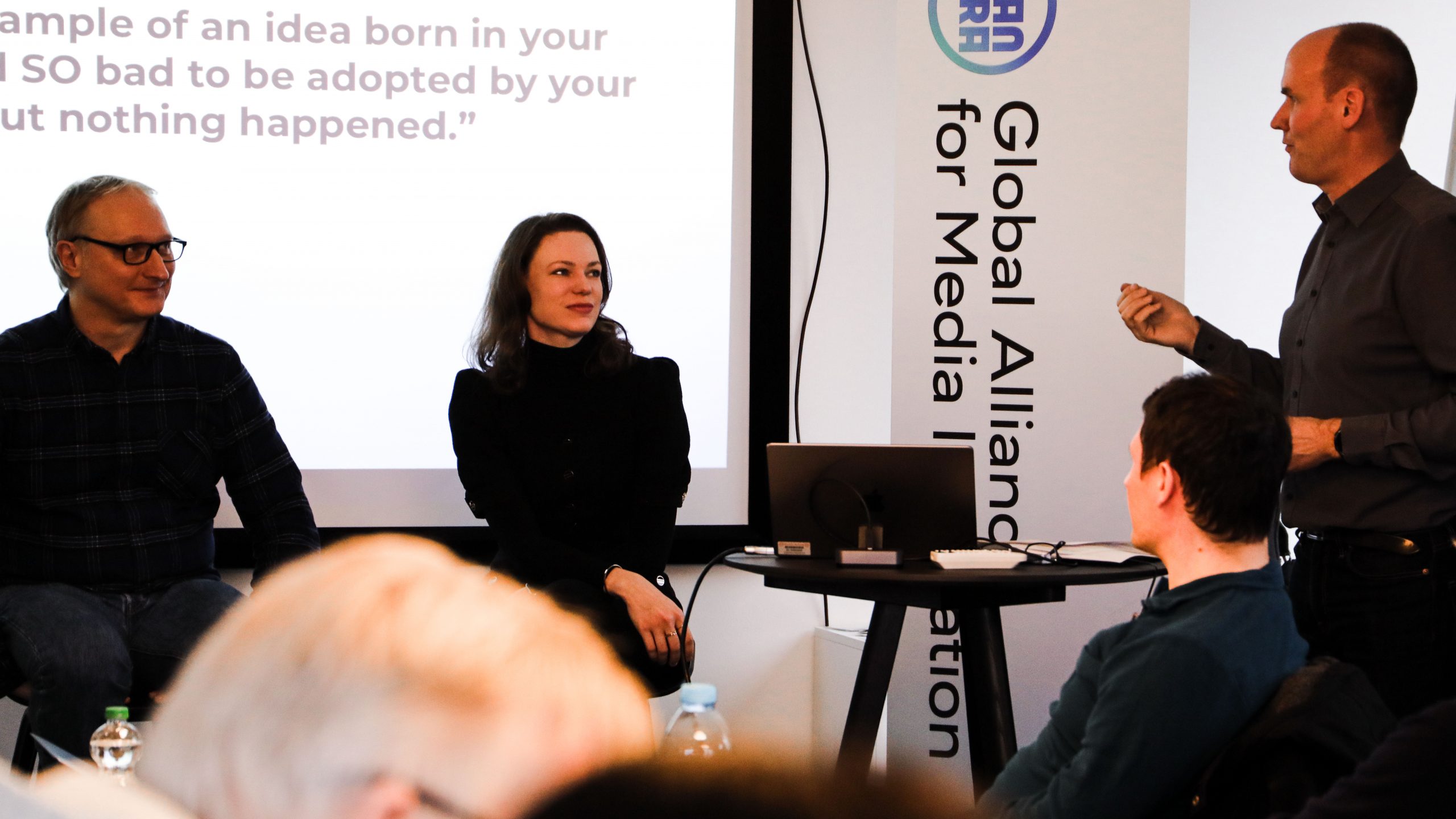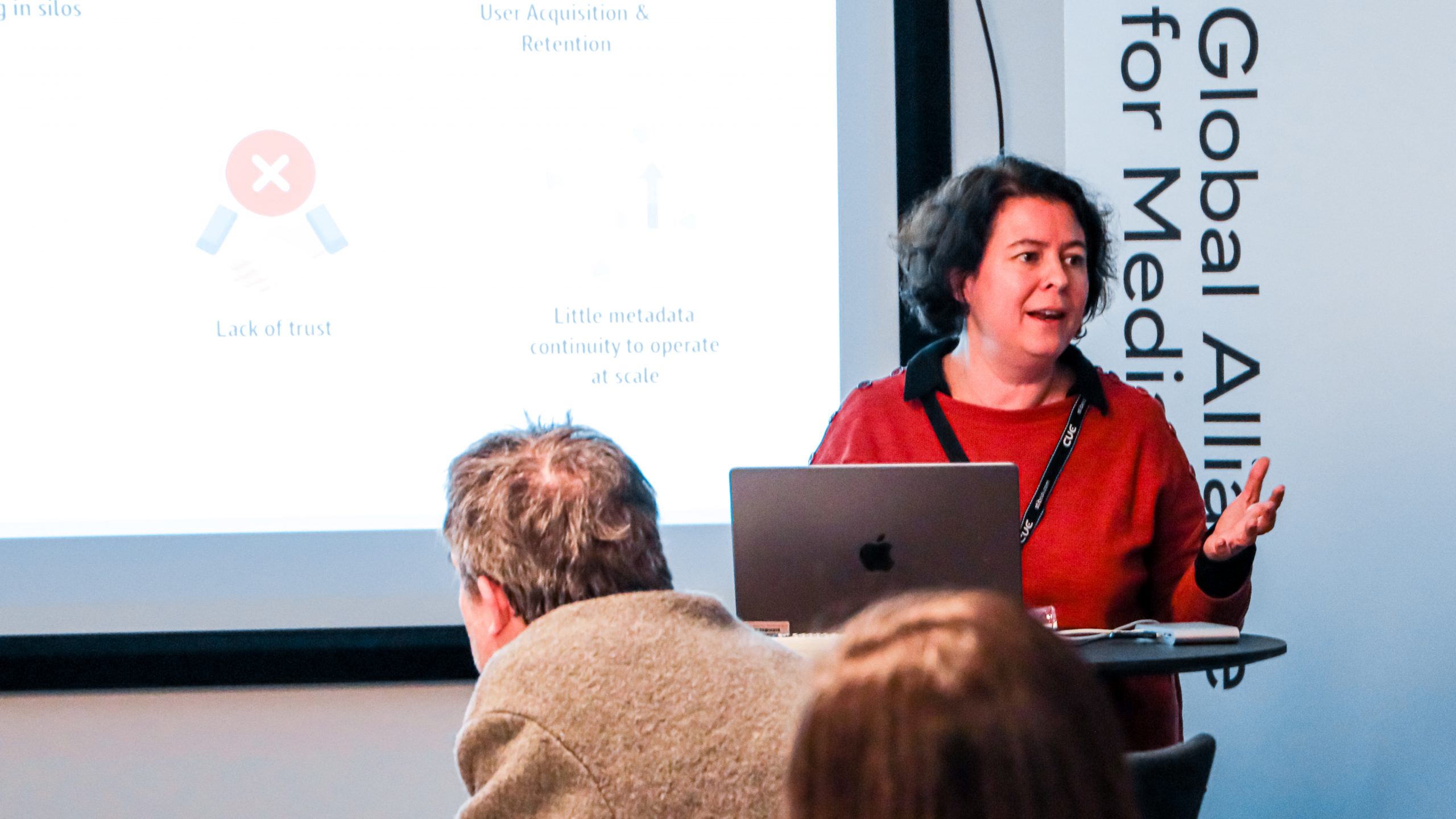Media Lab Days #6 heads to Hamburg
The sixth edition of WAN-IFRA’s Media Labs Days, this year held in Hamburg on January 26th and 27th, brought together media labs, academics and start-ups, focusing on themes like innovation processes, Web3 or AI, including the current opportunities and barriers facing the industry.
Day one opened with a focus on Hamburg: the city of content and tech. Hamburg has a reputation for its creativity when it comes to media and technology and as a result this area has become a popular professional aspiration for many young people.
Participants heard from panellists how Hamburg is a burgeoning media hub and the progression of German-based media start-ups. Speakers included Paula Lauterbach, Communications Manager at nextMedia Hamburg, manager partner Christoph Hüning of NMA Venture Capital, Berndt Röttger, Deputy Chief Editor Hamburger Abendblatt and Sophia Boysen, Product and Project Manager at software start-up BotTalk.
 Speakers discussed how start-ups are the essential catalyst for media innovation and how their companies invest and capitalise on supporting early start-ups, many through media incubators which act to support these growing companies. The work of start-ups is slowly starting to expand to include other sectors and foster collaboration, particularly with NMA Venture Capital, their work seeks to connect start-ups and corporates to foster collaboration and innovation.
Speakers discussed how start-ups are the essential catalyst for media innovation and how their companies invest and capitalise on supporting early start-ups, many through media incubators which act to support these growing companies. The work of start-ups is slowly starting to expand to include other sectors and foster collaboration, particularly with NMA Venture Capital, their work seeks to connect start-ups and corporates to foster collaboration and innovation.
Start-up BotTalk was featured as an innovation case study. BotTalk is an audio content management system that provides excellent quality text-to-speech automation. The software was borne out of the rise of the pandemic which equated to the rise of the podcast and aims to work on making text-to-speech to be as human as possible. They currently have 10,000 linguistic rules, and more than 20,000 words in their dictionary, aiming to bring podcasts and text-to-speech together.
Afternoon discussions also covered how media labs and accelerators are now recruiting young professionals and students to inspire out-of-the-box thinking and contribute to media innovation through collaborations with local Universities. Kim Svendsen, Chief Marketing Officer at Stibo DX – our hosts for the two-day event – discussed how the company contributes to such media innovation. Stibo Systems owns and runs its own media lab, the Stibo Accelerator in Aarhus, Denmark. The accelerator was established in 2014 and is currently running its 18th season to help the next generation of students aspiring to work in media innovation.

The introduction on start-ups was supplemented by case studies on new labs from the WAN-IFRA community. The first example came from Helge O. Svela, CEO of Media City Bergen in Norway. Their work revolves around two main pillars:
- A sustainable democracy: A fundamental force to empower important stories, ensure an informed population, and strengthen democracy. A well-working ecosystem to fuel editorial innovation, promote media diversity and fight filter bubbles and false information.
- A world-leading technology hub: Media City Bergen is a leading, international hub for media and technology innovation.
The second case study came from Joerg Pfeiffer, Product Manager at BR AI + Automation Lab at Bayerrische Rundfunk. His presentation discussed user-centric journalism with algorithms. Journalists can use algorithms in the newsroom to:
- Support editors in their work processes
- Personalise services for users
- Open up large amounts of data
- Support research
The use of algorithms can contribute more to the consumption of personalised content, reaching a fragmented audience as a public service broadcaster and providing consumers with hyper-regional news offering more relevant to their local area.
The final speaker in this session was Alexandra Folwarski, Team Lead at the Media Innovation Lab at Wiener Zeitung. Their media lab is formed of approximately eight media start-ups which are supported for nine months. The lab works as an incubator and accelerator, providing workshops and individual coaching in terms of support. This is provided by its Alumni programme which offers workshop sessions and more networking opportunities.
The day ended with a FOCUS session: Web3 for News Media: definitions, opportunities, state of play?
Hans Brorsen, European Blockchain Center at the IT University of Copenhagen, introduced Web3 – a new iteration of the World Wide Web which incorporates concepts such as decentralization, blockchain technologies, and token-based economics. The core ideas of web3 are:
- Web3 is decentralised and censor proof
- Web3 is open and transparent
- Web3 is user-centric and enables digital ownership of assets and identities.
The rest of the talk discussed the elements of Web3 including an overview of services surrounding blockchain technology, and a look at possible uses including crypto-wallets, NFTs (non-fungible tokens), DAOs (decentralised autonomous organisation) and decentralised storage.
Raúl Jaramillo, Project Manager at Cogency, an international coalition of content makers, designers and builders supported by WAN-IFRA developed further these conversations. Cogency runs projects that aim to have a meaningful impact and bring clarity and logic to help solve complex problems. He presented the concept of creating a decentralised digital identity which then sparked a debate about the opportunities of Web3 technologies for news media in the future.

To begin day two, discussions focused on how to create innovation, and where the place is for innovation in a media organisation?
Lina Timm, CEO of Medien.Bayern; Joachim Dreykluft, Member of the board of management for NOZ Digital, and Hendrik Lehmann, Head of the Tagesspiegel Innovation Lab formed a panel to focus in on this key question, covering successful and not-so-successful examples.
Medien Bayern supports numerous start-ups and tried a membership connection and entrepreneurship programme which was unsuccessful. In the future, Lina Timm said they want to focus on how to cater for consumers better when it comes to media/news/innovation.
NOZ Digital wanted to create a YouTube channel and incorporate this into a successful business model, but it failed due to a lack of interest from within. Joachim also talked about the failure of labs because of innovation – some people are ideas people and not product developers/businesspeople.
Finally, Hendrik Lehmann talked about wanting to get into podcasts which would have required minimal costs, but the plan did not move forward at the time.
After this panel, the conference continued with another FOCUS session on the latest in fact-checking, led by Nathalie Gallet, Journalist, MédiaLab de l’information, France TV. Their fact-checking teams help journalists as well as the public to inform with reliable content and the public to share authentic information. One of their next projects is to partner with Norwegian factchecking initiative to create a search engine for fact-checked images/videos. In another related project, Vera.ai, Denis Teyssou, Head of MediaLab AFP is focusing on disinformation analysis and AI-supported verification tools and services. Vera.ai is an EU funded project with the involvement of 8 research partners, 2 commercial organisations with relevant products and 2 global news and fact-checking providers.
Moving to start-ups, Andy Taylor, CEO and Founder of Accordion, introduced how his product allows users to automatically shorted play times for podcasts and video media. Taylor pitched that the technology allows listeners to adjust the length of their desired content without compromising on structure, tone or listenability. Christopher Brennan, Chief Product Officer at Overtone.ai, explained that his product aims to highlight ‘quality’ journalism. Using AI algorithms and natural language processing it focusses on the qualities of the text itself, rather than tertiary metrics such as clicks and shares. It highlights original reporting, good sourcing and the effectiveness of how ideas are explored and expressed. Overtone.ai wants content to be assessed on its actual quality rather than click-based metrics.
The end of the second and final day was marked with the closing discussion on large language models, including ChatGPT and its siblings. Language models like ChatGPT are particularly topical at the moment given their popularity for producing accurate content. The idea behind this kind of software is to build a structure similar to the human brain which can generate text on any topic. The software incorporates information from sources like websites, social media and scientific publications. The potential of ChatGPT in our industries could be to:
- Improve efficiency in content creation
- Focus journalistic attention on Investigation
- Reduce costs for engaging viewers/readers
ChatGPT is already proving effective in the field of media when it comes to writing and creating copy and content. ChatGPT is an extrapolation of a class of machine learning Natural Language Processing models known as Large Language Model (LLMs). LLMs digest huge quantities of text data and infer relationships between words within the text.
The final thought of the conference came from Rolf Dyrnes Svendsen, chair of the GAMI board, who highlighted how important these conversations are for the industry and how important it is to exchange and network with our peers and like-minded people.
Media Labs Day #7 will take place in Bergen in the autumn – join our Global Alliance for Media Innovation to be there too…
Written by Erin Wilson.
